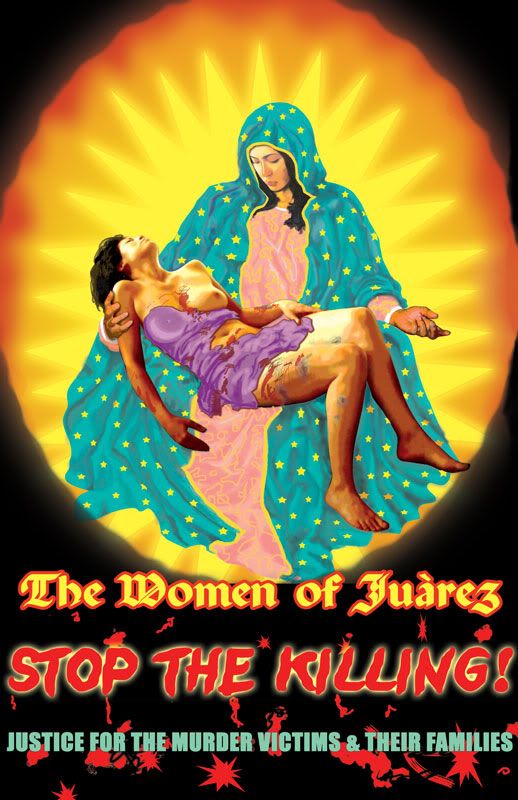
Artwork by Laura Molina
http://www.lauramolina.com
“Roses are the Mexican’s favorite flower. I think, how symbolic – thorns and all” (Gloria Anzaldua)
Amalia Ortiz
"Women of Juárez" The Spoken Word
“Not all the victims are rural, not all of them are outsiders to the border metropolis, not all of them worked at a maquiladora, live alone, or had indigenous features. But most of them are Mexican, impoverished, and young. There was a time when no one knew about the Juarez femicides, as these crimes have come to be called to signify the misogyny of the perpetrators.
The Mexican Government’s new line, after years of inept investigations and covert maneuvers to derail progress on any of the cases, is that the femicides are nothing but an invention of some crazy feminists and the attention grabbing mothers of a few dead prostitutes, a way of making Juarez look like a modern-day incarnation of the Spanish Inquisition out to hunt down, torture, and sacrifice young women, an image that city officials and merchants say is spoiling tourism to the city.
You already know that between 1993 and 2008, more than 500 poor Mexican women and girls, some as young as 5, some in their sixties and seventies , were violently slain in Ciudad Juarez.You know their bodies were found strangled, mutilated, dismembered, raped, stabbed, torched, or so badly beaten, disfigured, or decomposed that the remains may never be identified. Their bodies bore the signature of serial killers, the bodies half-clothed, hands tied behind their backs, evidence of rape, genital mutilation.
You know their brutalized bodies were dumped in deserted lots around Juarez, downtown plazas, and busy city intersections. They’ve been found in trash dumpsters, brick ovens, vats of acid, and abandoned cars, as well as on railroad tracks, under beds in hotel rooms, across the street from a police station or the headquarters of the Maquiladora Association.”
This is an excerpt from the book: “Making a KILLING: Femicide, Free Trade, and La Frontera” by Alicia Gaspar de Alba, with Georgina Guzman.